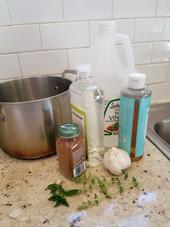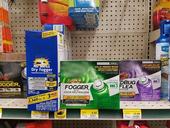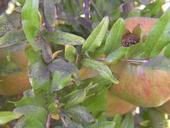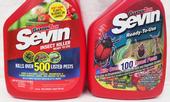- Author: Karey Windbiel-Rojas
- Author: Belinda J. Messenger-Sikes

Instructions for making homemade mixtures to control pests are easy to find online and in social media, and it's tempting to make your own home remedy when pests invade. Doing so may seem like a natural, organic, and non-chemical solution, but did you know that what you are mixing is considered a pesticide? A pesticide is any mixture used to kill, destroy, repel, or mitigate a pest.
Pesticide mixtures of household ingredients like dish soap, garlic, and vinegar (Figure 1) may seem harmless and safer than storebought formulated pesticides, but they can actually pose unrealized risks.
What is the concern with homemade pesticides?
While ingredients in home remedies are items we might eat or use in the kitchen, the...
- Author: Belinda J. Messenger-Sikes
- Author: Lisa A Blecker
- Posted by: Elaine Lander

Insecticide foggers, also known as total release foggers or “bug bombs” (Figure 1), are popular products widely available in many retail nurseries and garden centers as well as drug stores, supermarkets, and convenience stores. These easy-to-use products may seem to provide an easy way to kill a lot of bugs fast and may be viewed as more convenient and cheaper than hiring a pest management professional. But do they work?
Are Foggers Effective?
Foggers can be used effectively to kill pests that are flying around or resting on surfaces, like flies, but there are better long-term and more effective...
- Author: Belinda J. Messenger-Sikes
- Author: Karey Windbiel-Rojas
- Author: Elaine Lander

Sooty mold is a black fungal growth that looks like a layer of soot covering the leaves of a plant or a sidewalk. The aptly named disease is common in gardens and landscapes, appearing wherever a large infestation of plant-sucking insects are found. Sooty mold grows on honeydew, a sticky substance excreted by plant-sucking insects.
While sooty mold doesn't actually damage plants or other surfaces, a thick growth of the fungus can block light to plant leaves, reducing photosynthesis. This can lead to stunted growth and premature leaf drop.
The key to reducing sooty mold is management of honeydew-producing insects,...
- Author: Belinda J. Messenger-Sikes
- Author: Karey Windbiel-Rojas

We all have our favorite products, whether it's laundry detergent, shampoo, or a pesticide you know works against the pests in your home or garden. But what happens when a company changes the ingredients in a product? Does it work, smell, or lather differently?
You may visit a store looking for a pesticide product by name, not realizing that several popular pesticide brands have recently changed their active ingredients (the materials in pesticide products that actually...


